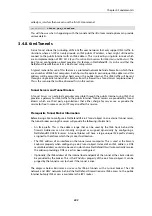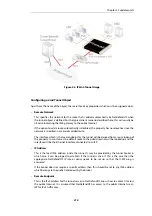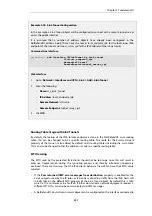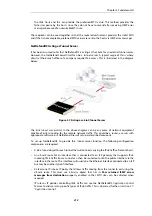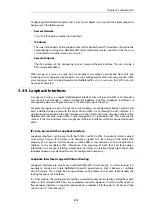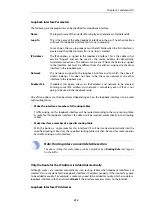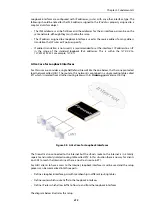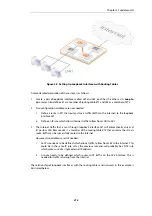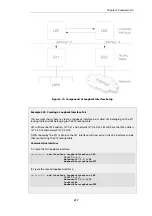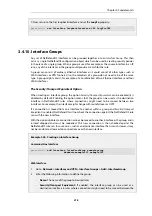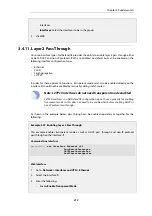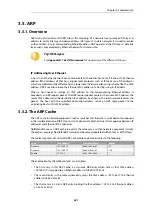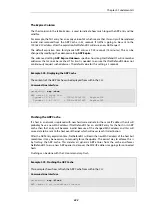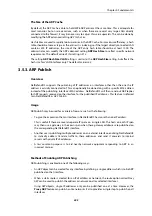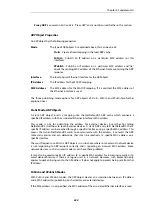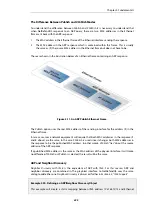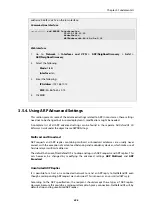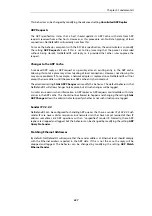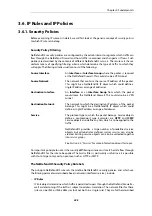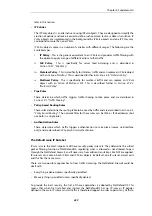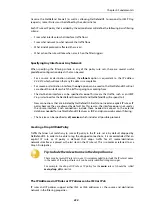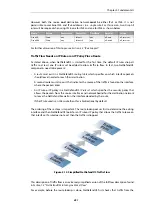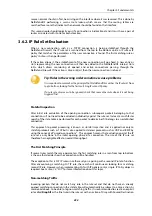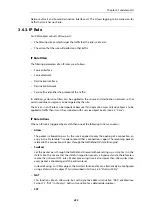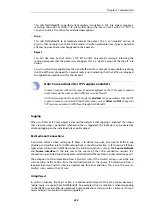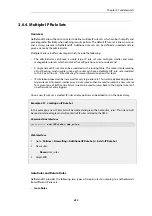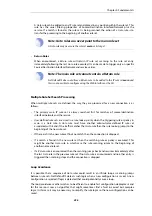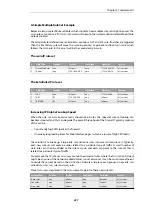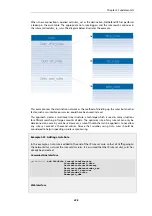
The Size of the ARP Cache
By default, the ARP Cache is able to hold 4096 ARP entries at the same time. This is adequate for
most scenarios but on rare occasions, such as when there are several very large LANs directly
connected to the firewall, it may be necessary to adjust this value upwards. This can be done by
modifying the ARP advanced setting
ARP Cache Size
.
Hash tables are used to rapidly look up entries in the ARP Cache. For maximum efficiency, a hash
table should be twice as large as the entries it is indexing, so if the largest directly connected LAN
contains 500 IP addresses, the size of the ARP entry hash table should be at least 1000. The
administrator can modify the ARP advanced setting ARP Hash Size to reflect specific network
requirements. The default value of this setting is
512
.
The setting ARP Hash Size VLAN setting is similar to the ARP Hash Size setting, but affects the
hash size for VLAN interfaces only. The default value is
64
.
3.5.3. ARP Publish
Overview
NetDefendOS supports the
publishing
of IP addresses on interfaces other than the one the IP
address is actually connected to. This can optionally be done along with a specific MAC address
instead of the publishing interface's MAC address. NetDefendOS will then send out ARP replies
for ARP requests received on the interface for the published IP addresses. This feature is referred
to in NetDefendOS as
ARP Publish
.
Usage
ARP publish may be used for a variety of reasons, such as the following:
•
To give the impression that an interface in NetDefendOS has more than one IP address.
This is useful if there are several separate IP spans on a single LAN. The hosts on each IP span
may then use a gateway in their own span when these gateway addresses are published on
the corresponding NetDefendOS interface.
•
Another use is publishing multiple addresses on an external interface, enabling NetDefendOS
to statically address translate traffic to these addresses and send it onwards to internal
servers with private IPv4 addresses.
•
A less common purpose is to aid nearby network equipment responding to ARP in an
incorrect manner.
Methods of Enabling ARP Publishing
ARP publishing is enabled in one of the following ways:
•
An
ARP
object can be created for any interface by defining a single address which is to be ARP
published on that interface.
•
When a static route is created for an IPv4 address or network, the route option called
Proxy
ARP
can be used to publish the address or network on all or selected interfaces.
Using
ARP
objects, single IP addresses only can be published one at a time. However, the
Proxy ARP feature can publish entire networks. It also provides a single step to publish on all
interfaces.
Chapter 3: Fundamentals
223
Summary of Contents for NetDefendOS
Page 30: ...Figure 1 3 Packet Flow Schematic Part III Chapter 1 NetDefendOS Overview 30 ...
Page 32: ...Chapter 1 NetDefendOS Overview 32 ...
Page 144: ...Chapter 2 Management and Maintenance 144 ...
Page 284: ...Chapter 3 Fundamentals 284 ...
Page 392: ...Chapter 4 Routing 392 ...
Page 419: ... Host 2001 DB8 1 MAC 00 90 12 13 14 15 5 Click OK Chapter 5 DHCP Services 419 ...
Page 420: ...Chapter 5 DHCP Services 420 ...
Page 573: ...Chapter 6 Security Mechanisms 573 ...
Page 607: ...Chapter 7 Address Translation 607 ...
Page 666: ...Chapter 8 User Authentication 666 ...
Page 775: ...Chapter 9 VPN 775 ...
Page 819: ...Chapter 10 Traffic Management 819 ...
Page 842: ...Chapter 11 High Availability 842 ...
Page 866: ...Default Enabled Chapter 13 Advanced Settings 866 ...
Page 879: ...Chapter 13 Advanced Settings 879 ...

